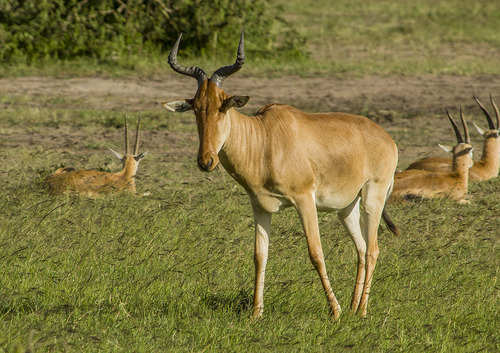
Hartebeest
The agile hartebeest, Alcelaphus buselaphus, roams Africa's vast savannas in formidable herds. With iconic curved horns and brisk agility, they are not only fleet footed but essential in grassland dynamics, emphasizing their ecological importance as both prey and grazers.
11-20 years
Lifespan
119.75 - 219.99 kg
Weight
Length: 91 - 152 cm; Height: 1.524 - 2.438 m
Size
Brown, Tan, Dark
Color
1-2 years
Age of Sexual Maturity
4-8 months
Age of Weaning
Low
Aggression
43 mph
Top Speed
Least Concern
Conservation Status
Decreasing
Population Trend
Characteristics
The Alcelaphus buselaphus, commonly known as the hartebeest, is a large African antelope recognized for its elongated face and peculiar, backward-curving horns. It inhabits savannas and grasslands, forming large herds. Known for their speed and endurance, hartebeests are vital grazers, maintaining the balance of the ecosystem.
Distribution Range of the Hartebeest
Alcelaphus buselaphus, commonly known as the hartebeest, is native to Sub-Saharan Africa. Its geographical distribution spans across several countries including Kenya, Tanzania, South Africa, Namibia, Botswana, and Zambia, among others. The species is found in various regions across these countries, often in protected areas and national parks.
Hartebeest's Habitat
Environmental Conditions
The hartebeest typically inhabits savannas, grasslands, and open plains. These areas are characterized by warm climates with distinct wet and dry seasons. The environment generally features tall grasses and scattered trees, providing both grazing opportunities and minimal cover from predators.
Ecological Niche
Hartebeests are primarily grazers, feeding on grasses and occasionally browsing on leaves and shoots. They play a crucial role in their ecosystem by maintaining grassland health and serving as prey for large predators such as lions, hyenas, and leopards. The species exhibits adaptations such as a highly developed sense of smell and hearing to detect predators and long legs suited for endurance running.
Copyright @ Nature Style Limited. All Rights Reserved.
 English
English